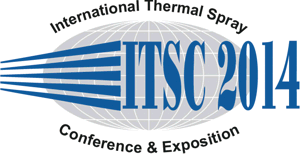
|
3733 |
|
Workplace exposure to nickel during thermal spraying processes |
|
Markus A. Blättler* / Suva, Switzerland Claudia Pletscher / Swiss National Accident Insurance Fund (Suva), Switzerland |
|
Introduction: Fume and dust from thermal spraying processes may contain carcinogens, metals and inor-ganic compounds of nickel, chromium and cobalt. Exposure measurements by the Swiss Na-tional Accident Insurance Fund (Suva) have shown, that mainly high concentrations of nickel and nickel compounds can arise. This study has the following objectives: - Assessment of workplace exposure to nickel during thermal spraying processes with nickel containing coating materials. - Hazard assessment based on occupational exposure limits. - Investigation of the relationship between the external exposure dose of nickel caused by the thermal spraying process and the inner exposure of subjects. Methods: An assessment survey of occupational exposure to nickel as well as the internal exposure was conducted in Switzerland between 2007 and 2010. For this study samples collected from 22 operators breathing zones (Airmonitoring) have been analyzed. In addition samples of urine from involved operators have simultaneously been collected in order to assess the internal exposure (Biomonitoring) of nickel. The hazard assessment is carried out on the basis of the Suva guidelines on OEL (Occupational exposure limits). In Switzerland, the maximum work-place exposure limit (MAK-value) for inhalable water-insoluble nickel compounds has since 2005 been greatly reduced to 0,05 mg/m3 (as Ni) and for biological agent tolerance value (BAT-value) to 170,4 nmol/l in urine. Results: The results of this study indicated airborne nickel concentrations in excess of the occupational exposure limit value of 0,05 mg/m3 in Switzerland. In the Airmonitoring 53% of facility opera-tors were significantly overexposed. The operators showed also increased concentrations of nickel in urine after exposure to fume and dust, 19% of them were overexposed. Measure-ment data as well as the correlation between external and internal exposure will be discussed. Conclusion: Based on these results and hygienic risk assessments we assume an overexposure of opera-tors against nickel compounds is due to certain affiliated activities with thermal spraying. Es-pecially critical is the premature entering of the spray booth in order to change workpiece and torch or for maintenance and cleaning purposes. Furthermore workpiece and facility cleaning with compressed air and broom finishing of workpieces and the changing of dust collection in the separator are identified as critical processes. Action Plan: For precautionary reasons, the nickel exposure to carcinogenic nickel compounds must be kept as low as possible through technical, organizational and personal protection measures. In addition to technical improvements, workplaces where exposure to nickel assessed by Airmonitoring is above 0.05 mg/m3 are put under the control of an occupational health care program and the internal exposure of involved employees is regularly monitored by biological monitoring. |